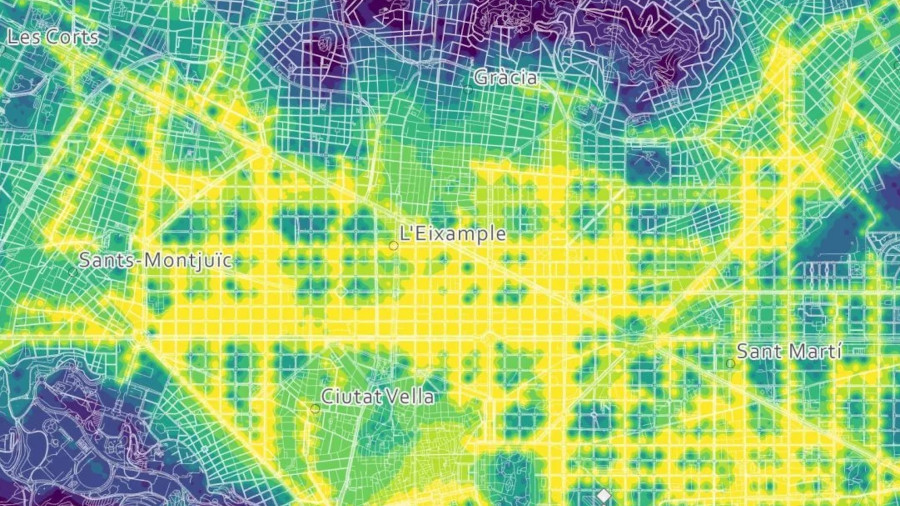A research team from the UAB Department from Geography, in collaboration with the universities of Granada, the Balearic Islands, and the Politècnica de València, has created an Atlas of Cities for Active Mobility, an interactive tool that can measure the possibilities within the city environment to move around on foot or by bike.

The Macaya Palau in Barcelona (Passeig de Sant Joan, 108) hosted on Tuesday 7 November the presentation of the Atlas of Cities for Active Mobility, which was given by UAB Department of Geography researcher Oriol Marquet. This is an initiative developed by the Mobility, Transport and Territory Study Group (GEMOTT) of the UAB Department of Geography in collaboration with the University of Granada, the University of the Balearic Islands and the Universitat Politècnica de València.
The Atlas explores the cities of Barcelona, Valencia, Palma de Mallorca and Granada to highlight the characteristics that promote sustainable mobility on foot and by bicycle. It combines 57 geo-referenced variables to provide detailed data and analysis on urban densities, cyclability, green spaces, urban vitality and also on the concept of the "15-minute city". "The aim of the atlas is to be a rigorous and reliable source of information for a healthier and more sustainable lifestyle in urban environments," explains UAB Professor of Urban Geography Carme Miralles-Guasch, coordinator of the project.
The atlas shows, among other data, that almost the entire urban area of Barcelona has good conditions for walking, with high residential densities, a large number of stores and many areas with pedestrian priority, concentrated in the historic centre, Sants, Gràcia, Sarrià and El Clot. Barcelona shows levels of active mobility potential similar to those of the cities of Palma de Mallorca, Valencia or Granada, in 42% of the urban area.
Both Barcelona and Granada have a surface area in which 76% of basic urban facilities and services are, at most, within a 15-minute walking distance, a measure of what is known as the "15-minute city", a percentage that rises to 81% in Valencia, but in Palma de Mallorca falls to only 38%.
As regards the ease of cycling, 22% of the city of Barcelona has a high level of cyclability, concentrated especially in the Eixample district. In Valencia, this percentage is 44% of the urban area, while in Granada it is 10% and in Palma de Mallorca 12%.
The atlas also provides detailed information on the urban vitality of these different cities, a measure of the capacity to promote activities in public spaces, as well as the percentage of urban green spaces, both public and private, in each municipality.
The presentation formed part of the conference "Are our cities designed for walking and cycling?", which included the participation of Mireia Boya, Director General of Environmental Quality and Climate Change of the Generalitat de Catalunya. During the session, emphasis was placed on the importance of this mobility and the indicators needed to measure the potential of the environment for walking and cycling.






